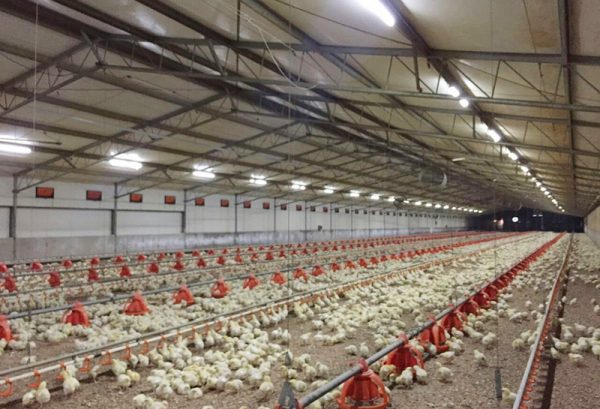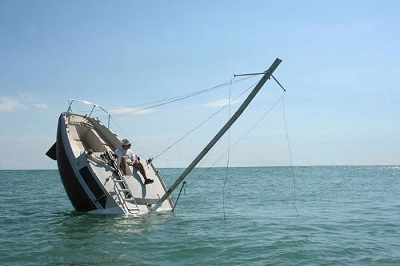Managing Heat Stress In Poultry, Other Livestock Farms

Heat, especially in the tropics, can have negative effects on poultry performance.
Number of eggs produced can reduce, weight gain can be impaired and feed conversion efficiency can be affected during the dry season if measures are not put in place to mitigate the effect of heat.
Stress emanating from heat may impair the immune system of poultry and increase susceptibility to disease.
When a bird begins to pant, physiological changes have already started within its body to dissipate excess heat.
Even before the bird reaches this point, anything that you do to help birds remain comfortable and healthy will help maintain optimum growth rates, hatchability, egg size, egg shell quality and egg production.
As defined by the PoultryHub, the comfort zone is the temperature zone in which the birds are able to keep their body temperature constant with minimum effort.
Physical behavior and physiological requirements of birds will change when temperatures rise to above the comfort zone as they will start to pant and change their body position, as well as reduce feed intake and increase water intake.
When temperatures are below the comfort zone birds will also change their body position and huddle together.
The thermo-neutral zone is the temperature zone in which the birds are able to keep their body temperature constant with the help of physical heat regulation.
The lowest temperature in the thermo-neutral zone is called the lowest critical temperature.
If temperatures fall to under this temperature, the bird will start to use feed energy to warm itself and will consequently consume more feeds. If more feeds are not available, production or growth rate reduces.
The highest temperature in the thermo-neutral zone is called the highest critical temperature.
If the temperature rises above this temperature the birds can no longer dissipate their heat. They will start to consume less feed and production will drop as a result.
For accuracy, the critical temperature for layers is 20°C. For every 1°C lower than 20°C, the birds require an extra 1.5 g of feed per day.
The most efficient temperatures for layers are between 20 – 24°C.
When temperatures rise above 24°C, shell quality and egg weight will reduce. The critical temperature for broilers and rearing birds is highly age-dependent.
Experts have prescribed ways of managing heat stress in poultry. The following are some of the tested measures against heat stress in poultry and other livestock businesses.
Vegetation around poultry pens
Vegetation should be kept and trimmed around poultry pens to increase ventilation in extreme hot weather conditions.
Shade trees should be located where they do not restrict air movement. This, expert have found out, reduces heat stress in poultry.
Mr. Raman Tunde Olayiwola, Executive Director of RTO Hatchery in Osogbo, had, during a visit to the farm, disclosed to The Guardian that planting ever-green trees around the poultry farm is a biological way of solving heat problems by creating a cool environment with the shades of the leafy trees.
Fans and air coolers
Fans or air coolers should be installed and routinely maintained where electricity is readily available.
A solar power expert, Mr Rotimi Pariola, advises farmers to use solar-powered fans or air coolers.
The solar fans, he said, would work perfectly on farms, and the cost of electricity bills would be eliminated while the birds enjoy adequate ventilation.
Another poultry equipment merchant in Ikorodu area of Lagos, Mr Banji Mustapha, said foggers could be installed with solar fans to produce could misty air circulated by fans within the pens.
This, he said, would neutralize heat build-ups and help the birds to maintain a temperature within the thermo-neutral zone which, in turn, will help adequate growth and more egg production.
Maintenance should include cleaning the fan and keeping pulleys and belts in good condition and properly adjusted.
To avoid total reliance on natural air movement, most producers have added circulation to increase air movement and promote the loss of body heat from the birds.
Poultry netting on sidewalls or air inlets often will pick up enough dust and cobwebs to restrict air movement and should be cleaned regularly.
Cool source of water
Keeping a reliable, clean, cool source of water available to poultry is essential to help the birds cope with high temperatures.
Because the birds excrete electrolytes during periods of heat stress, electrolytes can be added to the drinking water to replace those that are lost and to stimulate water consumption.
Avoid placing water pipes near the ceiling where the water will gain extra heat.
Lines in which the water has become warm can be drained to allow cooler water to reach the birds, or iced blocks could be placed in water tanks.
Good roofing materials
Another factor that affects heat gain of a house is the condition of the roof. A shiny surface can reflect twice as much solar radiation as a rusty or dark metal roof.
Roofs should be kept free of dust and rust. Roof reflectivity can be increased by cleaning and painting the surface with metallic zinc paint or by installing an aluminum roof.
Most ventilation systems can provide an adequate indoor environment when properly managed.
If the design and management of the ventilation system fails to satisfy the flock’s ventilation needs, stale, contaminated air can build up in the poultry house.
During extreme heat, birds could be sprayed with water and fanned.
This has an effective cooling effect on the birds and the effect could last for several hours. However, spraying may not be appropriate for a deep litter system.
A farmer in Ilorin, Kwara State, Mr Segun Olowo, said he sprays his laying birds with ice water during the extreme heat conditions. This, he added, is done twice daily, around noon and by 4.00p.m.
He claimed that this technique prevents heat build-up and helps maintain stable egg production, and likewise reduces morbidity and mortality associated with extreme heat.
Feeding time and Vitamin C
Dr Sunday Olabode, Sales and After Sales Manager at CHI Farms Ltd (AJanla Farms), Ibadan, said there are four basic steps to minimize heat stress in resource-poor countries or places.
One, he said farmers should feed their birds very early in the morning so that metabolic heat would not coincide with thermal heat. This way, he argued, the stress would be minimized.
The second step, he said, is making cool water available to the birds during the extremely hot periods.
The third method, he added, is making the roof high and of reflective materials to insulate against thermal heat penetration.
The last fourth step, he said, is adding Vitamin C to feeds or water of the birds as recommended by a veterinary doctor.








